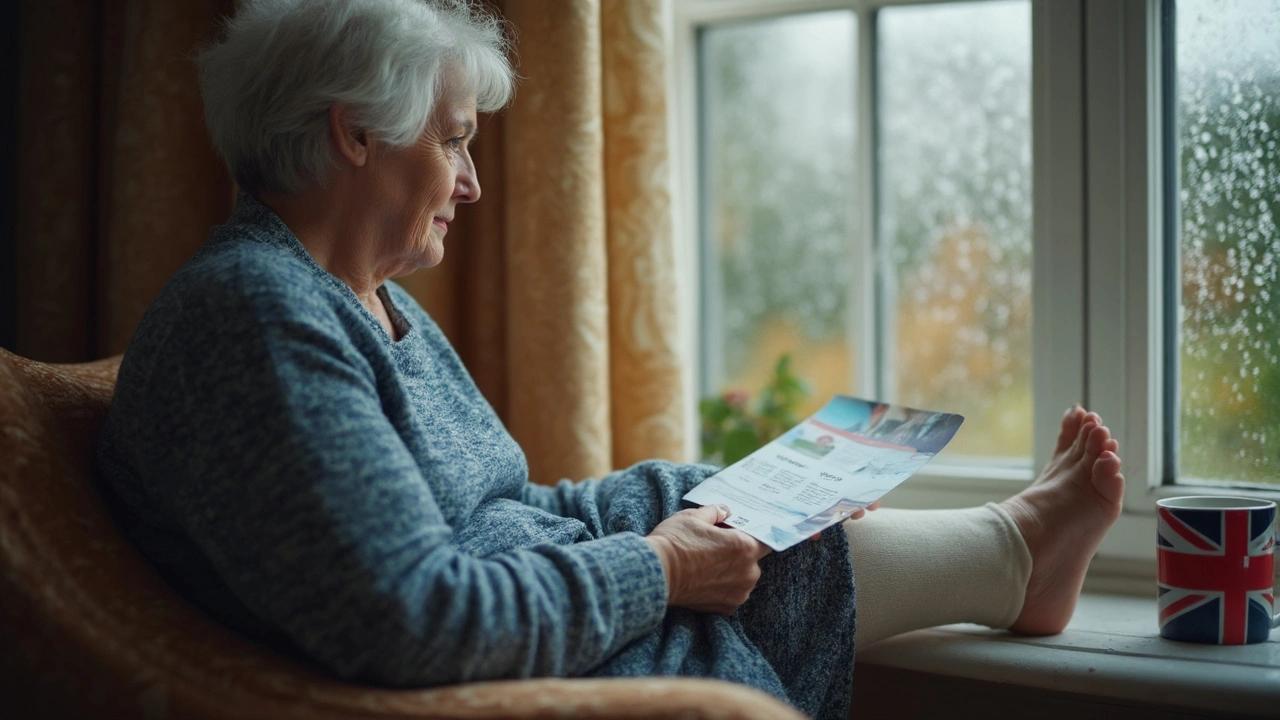Peripheral oedema: what it is and what you can do today
Peripheral oedema means extra fluid has built up in your feet, ankles or legs. It looks like swelling, and the skin may feel tight. You might notice your shoes feel tighter or a dent stays when you press the swollen area. It’s common, but the reason behind it can be simple or serious.
Common causes you should know
There are a few everyday reasons for swollen legs. Standing or sitting for long periods, a salty diet, or being overweight can all cause puffiness. Medicines like calcium channel blockers, steroids, NSAIDs and some diabetes drugs can make fluid build up. Tight veins (venous insufficiency), a blood clot in a leg (DVT), heart failure, kidney or liver problems and lymphatic issues are more serious causes.
If swelling comes on suddenly in one leg, or you have pain, redness and warmth, that could be a blood clot and needs urgent care. If swelling is sudden and you also feel short of breath or chest pain, get emergency help right away.
Simple checks and home steps that help
Try these practical steps before you panic. Elevate your legs above heart level for 15–20 minutes a few times a day. Move around—short walks and ankle pumps help drain fluid. Cut down on salt and processed foods; that often reduces puffiness in days. Compression stockings support veins and reduce swelling; choose the right strength (ask a pharmacist or clinician). Keep hydrated—oddly, drinking enough water helps your body stop holding on to fluid.
If a medicine may be the cause, talk with your doctor before stopping it. They can switch you to a different drug or adjust the dose. For long-term or severe oedema, your clinician may prescribe a diuretic (water tablet), arrange tests like blood work, ultrasound for DVT or an echocardiogram for heart issues, and refer you to a specialist if needed.
Physical treatments like supervised exercise, leg elevation routines, and lymphatic drainage massage can help certain types of oedema. If your skin becomes sore, weepy, infected or you develop ulcers, see a clinician quickly—skin complications are common when swelling is long-term.
Want a quick check at home? Measure the widest part of your ankle each morning and keep a simple log. If the number climbs fast, or swelling spreads to your thighs or abdomen, book a medical review. Small changes—less salt, more movement, a pair of good compression stockings—often make a big difference.
If you’re unsure what’s causing your swelling, make an appointment. A short assessment and a few tests can give clear answers and simple, effective treatment options. You don’t have to live with swollen legs—many causes are easy to fix once they’re known.
Understanding Oedema: Peripheral, Cerebral, And Pulmonary Swelling Explained
Curious why your ankles puff up or how the brain can swell dangerously? This article unpacks the three main types of oedema—peripheral, cerebral, and pulmonary. It digs into what makes each unique, symptoms to watch for, and tips on managing or preventing swelling. You'll find real tips, eye-opening facts, and clear insights on why oedema happens and what can be done about it. With everything from stats and risk factors to day-to-day advice, it's your go-to guide for understanding and handling serious swelling.
- View More
- 12

